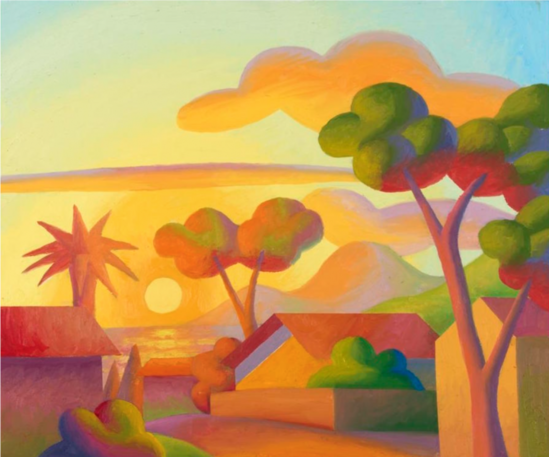


Salvo carries characters and images of the past in a highly contemporary imaginary through his paintings. His is an art of description and classification, where the importance is not given to the emotional and narrative event, but rather, to the objective data. Nothing is left to chance, everything evolves in relation to the space and to precise rules: specific seasons, as well as various times of the day, coincide with different colors.
Salvo is a "figurative" artist who erases the subject in order to make space to the true protagonist: the light. A kind of light that is never the exact one, but exceeds the representation, becoming “the error to be attained".
“I feel like a mountaineer who has to look for a new face to climb every so often, because I know the other one like a back of my hand. I have to look for something new not only in painting, but in nature and life, too. Then I look around me and at a certain point I discover a forgotten theme and I have a go at it, which means I try until I mistake, because only then does its personality show through. When I am no longer copying slavishly, then I add my own flaw...”
Another essential element in the poetics of Salvo is memory: memory mixed with invention, without ever coming into contrast with it. While the artist gives importance to formal details, he also draws from an underwater imaginary, in which empathy plays perhaps the main role.
“For me painting soon acquired a relation with reality, though always filtered by memory...At the same time it’s as though everything I paint now were a self portrait, as though it contained me, my history, my body, and so there is no longer any need to depict myself directly”.
Salvo (Salvatore Mangione) - Leonforte (Enna), 1947 – Torino, 2015
After spending his childhood in Sicily, Salvatore Mangione (aka Salvo) moved to Turin starting to paint and participating in 1963 to the 121st Exposition of the Company Promoter of Fine Arts.
After devoting himself to copy great artists such as Rembrandt, Van Gogh, Fontana and Chagall, in the late sixties he gets in contact with the creative community of Arte Povera, with important art critics and American conceptual artists such as Joseph Kosuth, Sol LeWitt and Robert Barry.
In 1970 he presents at the Galleria Sperone in Turin a series of photomontages in which he replaces his face with images from newspapers. In the same period he creates a series of marble slabs with engravings of words, phrases or names (eg. "Idiot", "I am the best", "Salvo lives") and several ironic and provocative works mythicizing his name by using neon letters in shades of tricolor or by inserting his signature at the bottom of lists of artists and personalities of the past.
Source URL: http://newsite.iitaly.org/magazine/focus/art-culture/article/art-exhibition-salvo-io-sono-il-migliore
Links
[1] http://newsite.iitaly.org/files/salvioiosonoilmiglioreierimontigallery1454002482png